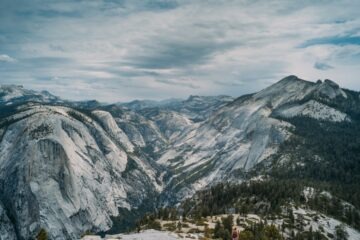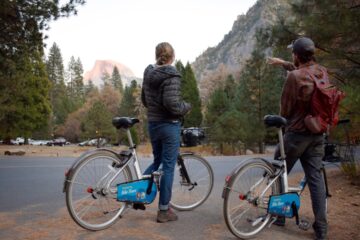A short version of this story appeared in our May 2020 magazine.
Field guides and binoculars might be the go-to tools for ecological exploration, but Lora Spielman, our art center coordinator, adds another item to the list: nature journals.
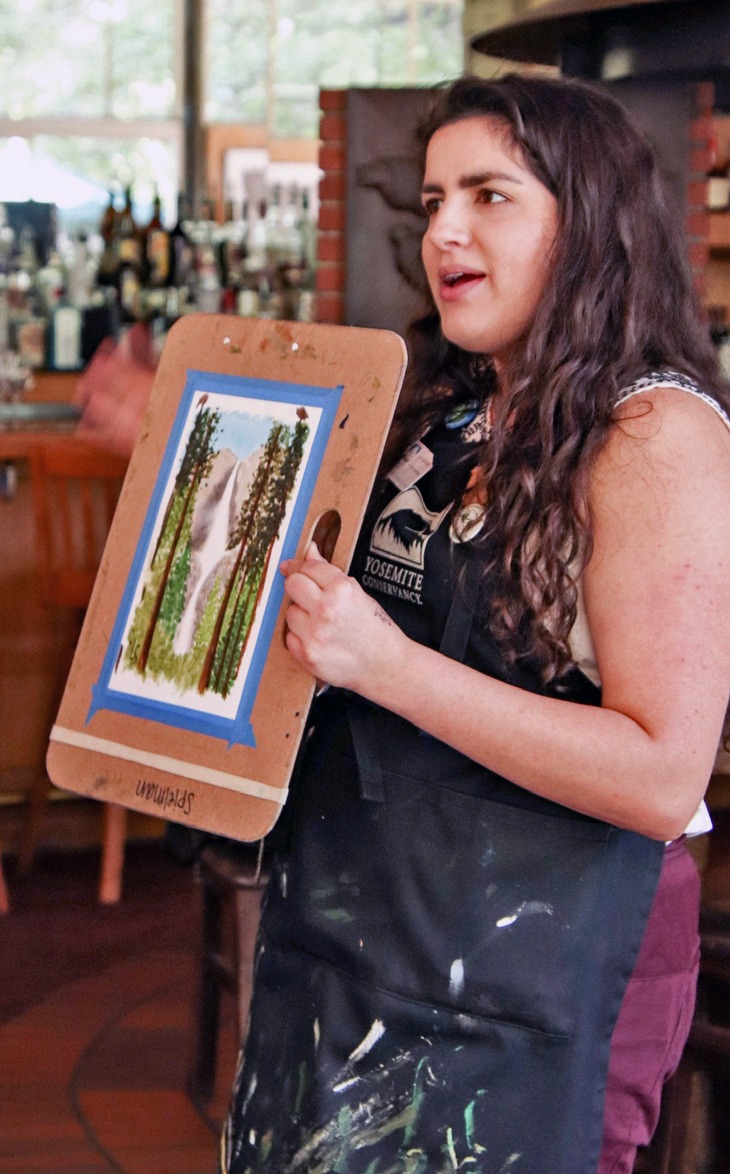
While our normally scheduled art classes are canceled for 2020, you can still learn from Lora through videos … and here on the blog. (Photo: Cindi Wood)
“In the past, I’ve felt intimated by the dynamic nature of Yosemite because I didn’t have the best grasp on geology, hydrology or ecology,” Lora says. “Over the years, I’ve found a lot of comfort in exploring nature in my own way — through art — and using that as a way to learn. Turns out, curiosity is your most powerful tool for understanding more about the natural world around you!”
Lora applies her curiosity and artistic talents to help lead our seasonal art programs in Yosemite Valley. She got her start with arts in the park as an intern on our art team back in 2017 — if you’ve spent time in Yosemite Valley in the past few years, you might have learned from Lora in a “Wine and Paint” class, brought young visitors to one of her children’s workshops, or gotten a warm welcome (and a heap of helpful information) from her at Happy Isles.
Happy Isles Art and Nature Center, our usual home base for all things art, is closed for the 2020 season due to the coronavirus pandemic, but you can still learn from Lora and get motivated to make nature-themed art thanks to videos and coloring pages she’s put together.
Stay tuned for more resources from Lora and other artists this summer, and in the meantime, get inspired to start your own nature journal! Whatever shape your outdoor journeys take — bird-watching, fishing, biking, picnicking, paddling, camping, or anything else — keeping a nature journal can help you tune into your surroundings in a deeper way, no easel or experience required. Lora offers a few tips for getting started:
1. Gather supplies. Start with a sketchbook, pencils and pens. For more flair, add colored pencils or a paint kit. Lora likes to use a small watercolor set she created inside an empty Altoids tin. Pack a field guide (or download a nature identification app, such as Seek, from iNaturalist) to help you learn about the plants and animals you might come across.
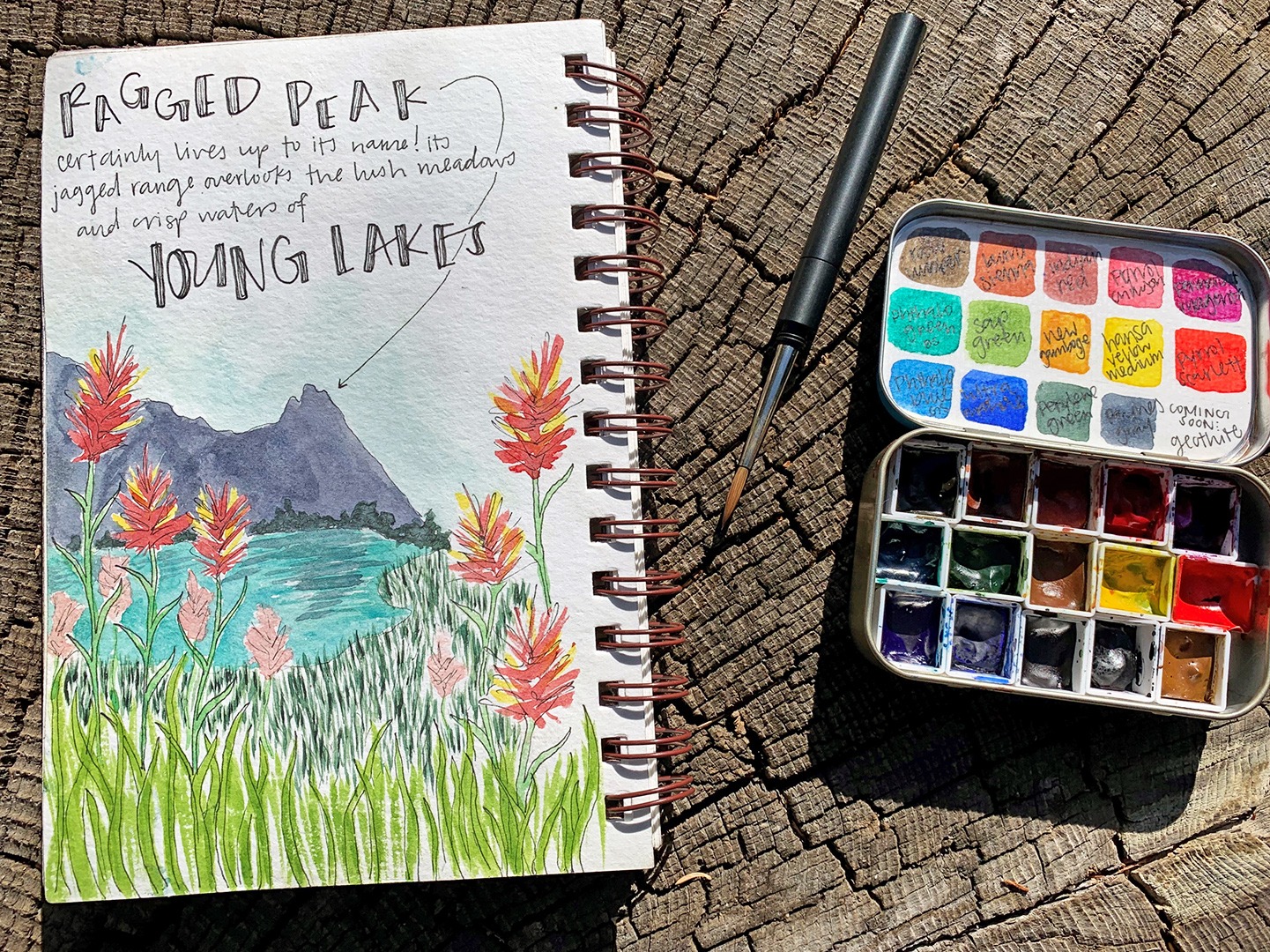
Lora’s watercolor sketch of Ragged Peak and Young Lakes, from a backpacking trip in Yosemite’s high country.
2. Choose a place to sketch. A shady park bench, a rocky summit, a sandy riverbank, a comfy seat next to a window. “It’s as simple as picking a place that interests you!” Lora says. She often seeks out less-traveled destinations, looking for places where she can focus undivided attention on observing and creating.
“True silence is being able to hear all the little details in nature,” she says. “We live in a world with constant noise and a constant need to multitask. I’ve found that when I take a moment to disconnect, I’m able to hear and see so much more, and from there my mind wanders with curiosity.”
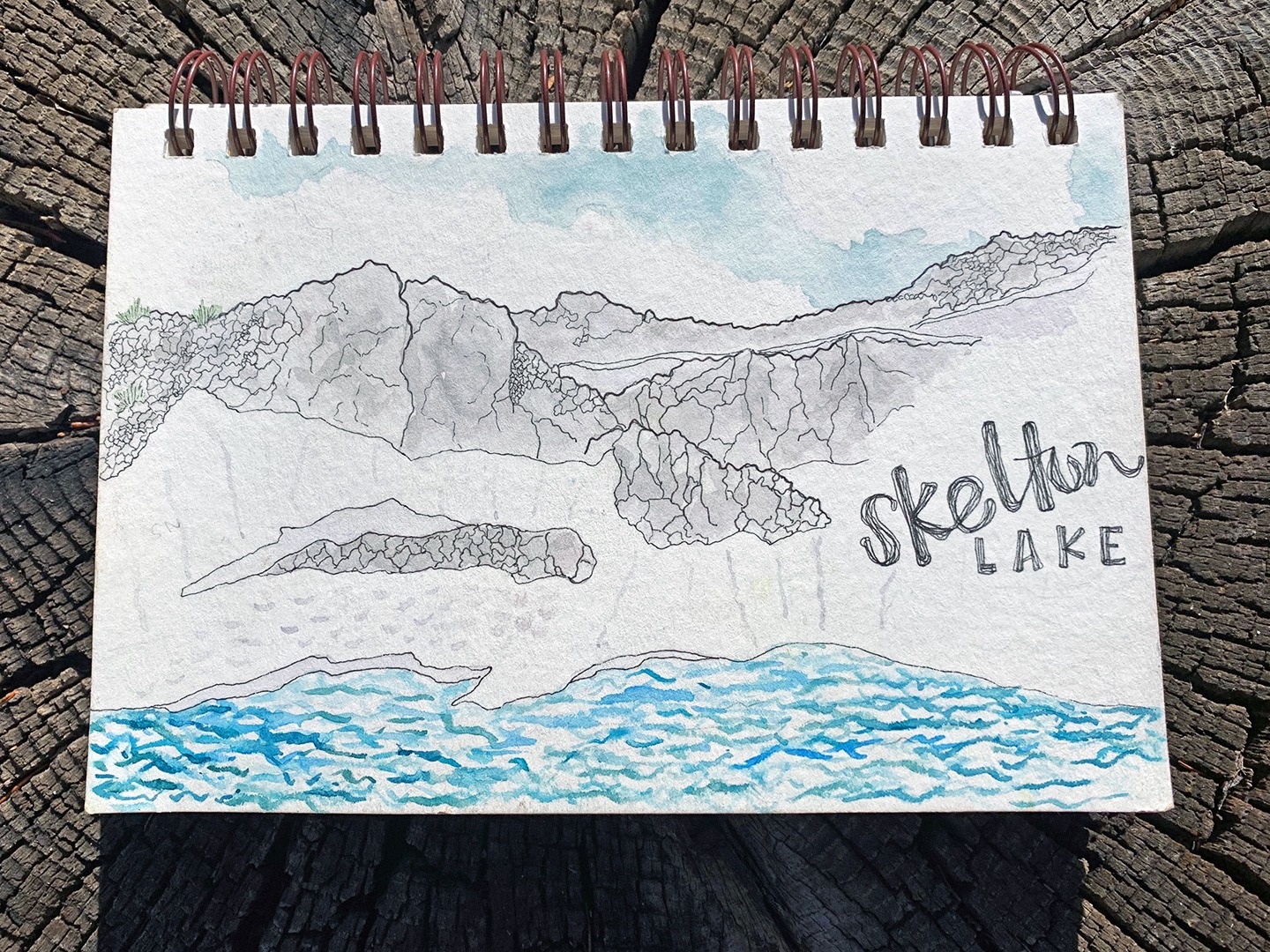
Lora captures a Sierra Nevada scene at Skelton Lake.
3. Observe your surroundings. Write the date, location and weather. Do you hear water, birds or wind? Do you smell damp earth or pine sap? “Ask yourself, what do I want to remember when I leave this place?” Lora advises. “I try to capture as much of my surroundings as I can, so that when I reopen my journal, I’m transported back to that place and time just through the entry.”
As you look at, listen to and immerse in your setting, Lora recommends giving yourself time to ask questions. You might start with a simple “What is this?” when a shape catches your eye, and then meander into some more complex musings. Why is that rock glinting like a disco ball in the sunlight? How long has that lichen been here? What are those birds saying to each other? If you have a field guide or app handy, look things up; if not, take notes on what you want to learn more about later.
4. Draw or paint whatever grabs your attention. What catches your eye? Are you drawn to a sweeping landscape scene, or to a lone leafy tree? Maybe a hovering dragonfly or a lacy pattern of shadows and light holds your gaze. Lora keeps in mind advice from one of our longtime volunteer art instructors, Steve Curl, to focus on capturing the essence of a scene or subject, rather than getting caught up in the details.
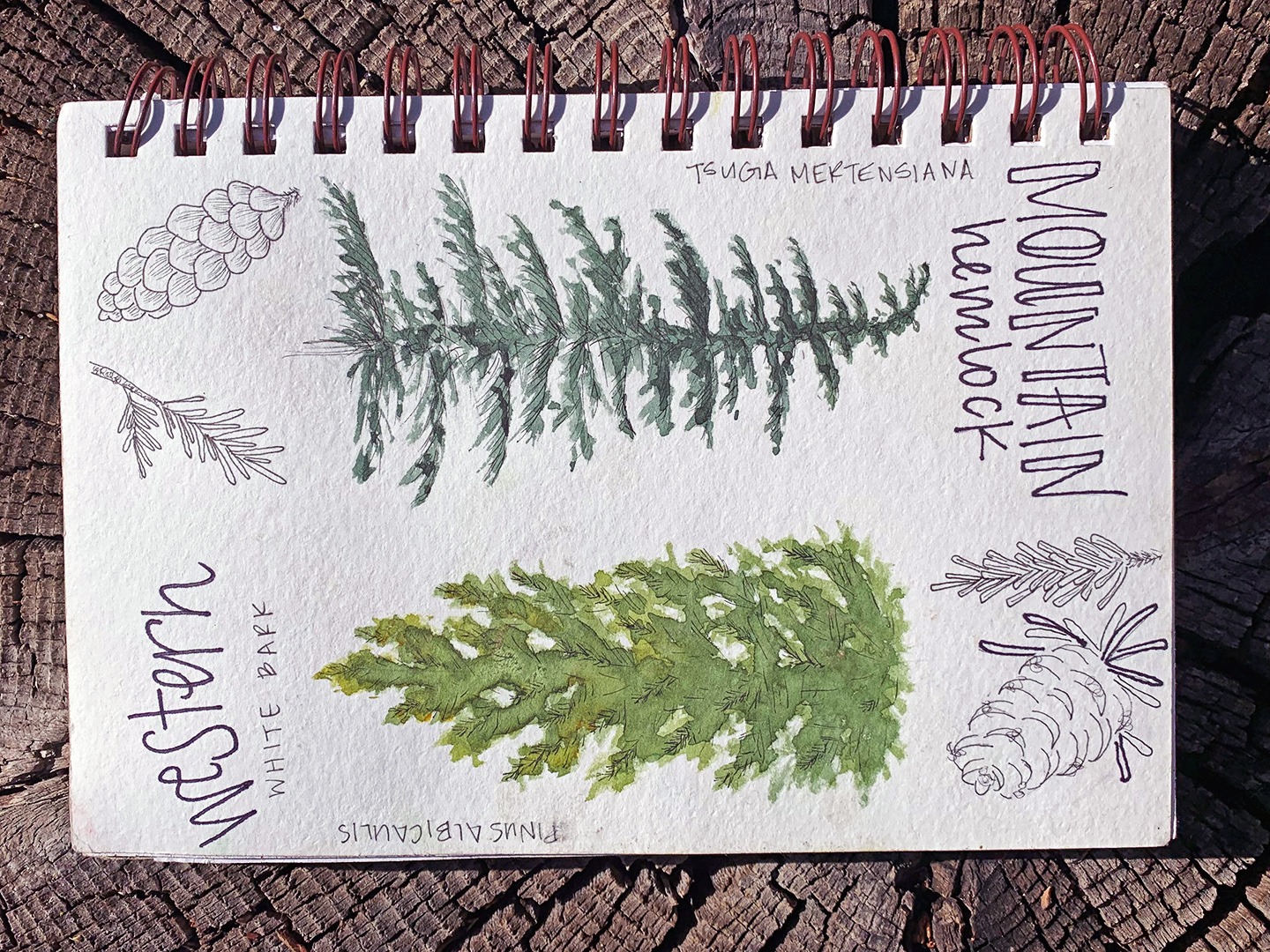
You don’t always have to capture a full landscape. In this sketch, Lora zooms in on twigs and cones to see differences and similarities among tree species.
5. Embrace imperfection. Your sketches and paintings probably aren’t going to match your vision every time. What do you do if your angles aren’t quite right, or if you just can’t get the shade of green you want? Don’t give in to frustration, Lora advises. “I think it’s important to be kind to yourself in the creative process,” she says, “and give yourself the space to make mistakes and learn.”
To help stave off exasperation, Lora suggests an approach she tried on a backpacking trip: As she created journal entries, she’d write down the technique or approach she was working on. That way, when she looked back at the entries later, she could be inspired to practice some more, could see how much she’d improved with a particular technique, or could try to capture the subject in a different way.
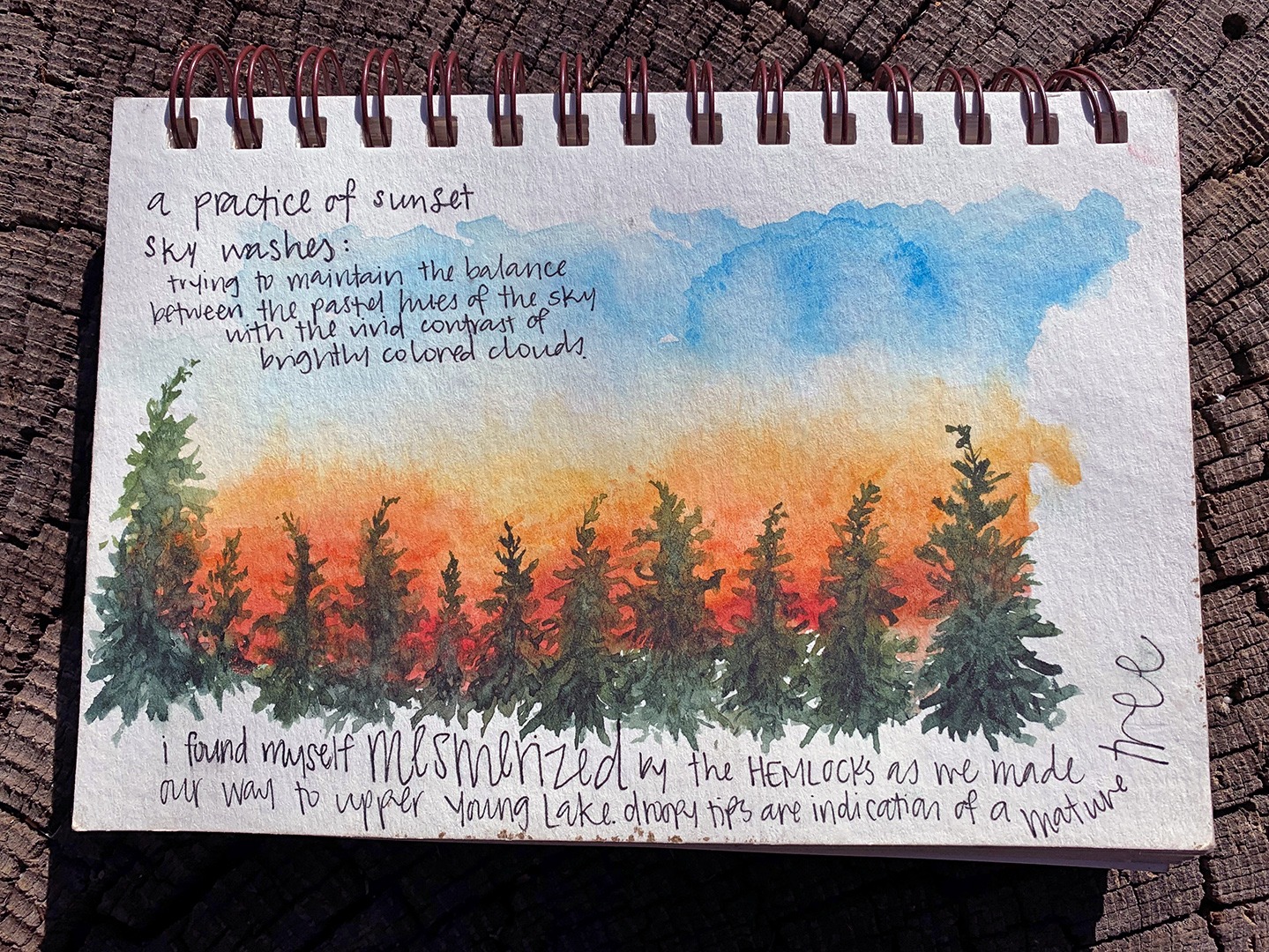
In this nature journal sketch from a hike to Upper Young Lake, Lora recorded the skill she was working on — painting a sunset.
6. Write. To capture the full essence of your experience, go beyond sketching and painting to incorporate writing into your nature journal entries. Jot down observations. Does the scene spur an idea, question or memory? Are you still giggling at a joke you heard earlier in the day? Is there a song lyric or poem that fits your mood?
Try keeping a log of birds and other wildlife you see. You can also incorporate some tangible mementos, like postcards or receipts — Lora likes to include stamps and stickers from different national parks.
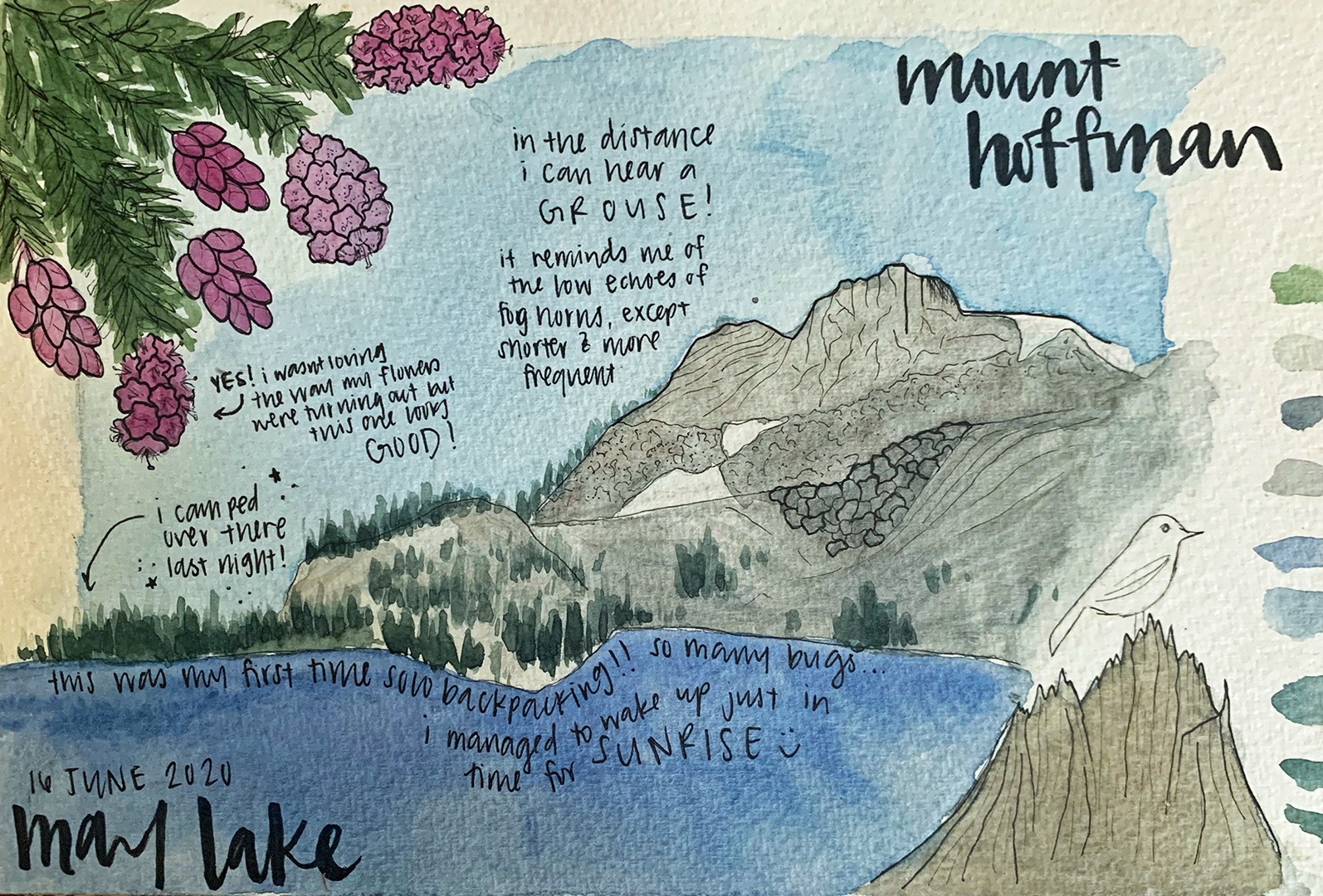
A nature journal entry from Lora’s June 2020 solo backpacking trip to May Lake, where she heard grouse, observed summer flowers and watched the sun rise.
7. Leave No Trace. As always, leave natural objects, such as seed cones and flowers, where you find them! Pack out pencil shavings and other litter, including any paint-contaminated water. Remember, Lora says: If something doesn’t grow naturally in the place you’re sketching, it shouldn’t be discarded there.
If you’re painting, consider using “water brushes,” which have a special handle that holds water — when you squeeze the handle, water comes out. Water brushes eliminate the need to dip your brush in and out of a water cup, and remove the tricky step of packing out dirty water.
In addition to helping you experience a place in the moment, Lora says, nature journaling can help create a portal to learning about the past. In Yosemite, for example, you might capture a scene similar to one that 19th-century painters such as Albert Bierstadt and Thomas Hill painted. You’ll see familiar features, like granite domes and waterfalls, but might notice shifts in the landscape. For example, the Valley floor had more open meadows and fewer trees in the late 1800s than it does today.
You could apply that same idea to your favorite outdoor spot. Try sketching the same place once a week, once a month or once a year, and compare your sketches to see how things have changed over time.
Art is a lens through which to observe and learn about the natural world — and if nature journaling fuels your creative curiosity, there are plenty of resources available. The Conservancy’s art classes are canceled for the 2020 season, but some of our instructors are sharing their expertise online. (On artist Jeff Hemming’s YouTube page, for example, you can watch a series of charcoal drawing demonstrations featuring Yosemite scenes, including Yosemite Falls, Glacier Point, El Capitan and the Cathedral Range.) Keep an eye on our social media and website for more resources from Lora and other artists throughout the summer!


